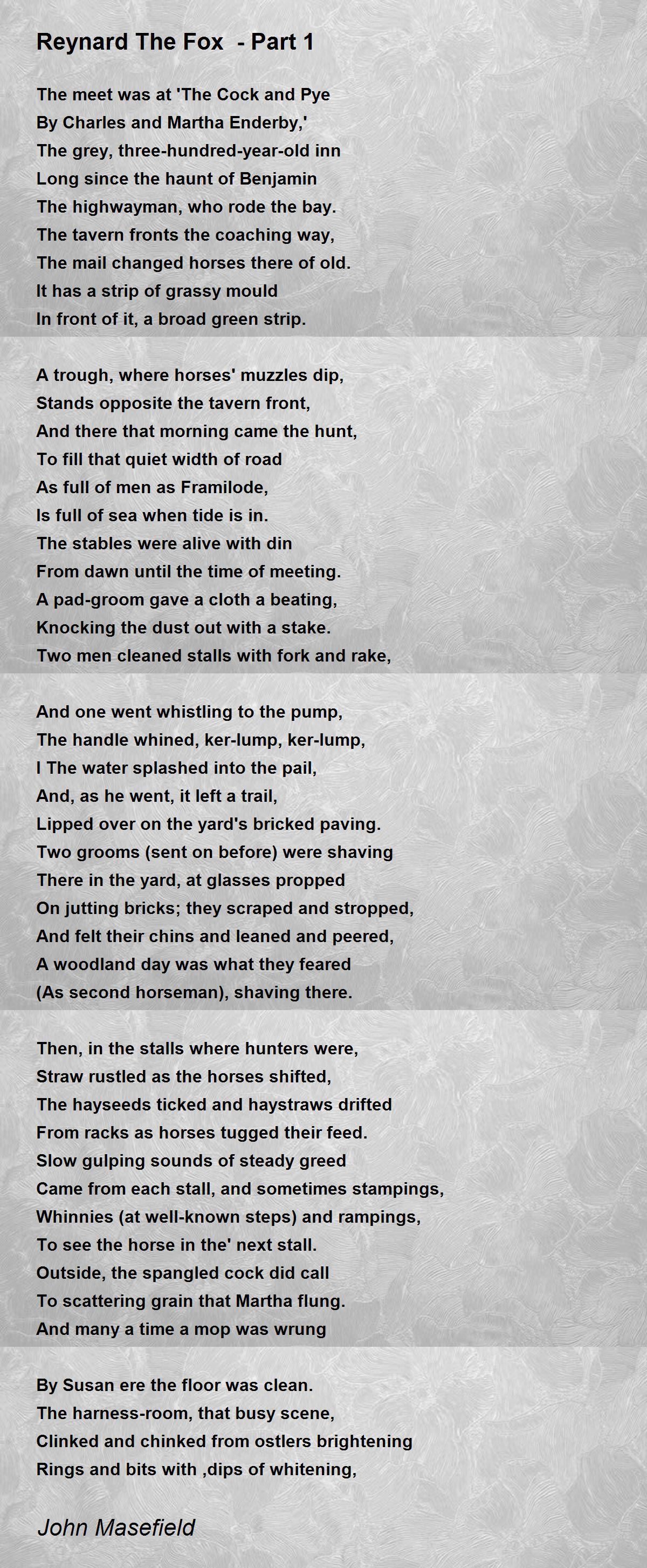

Perhaps in the belief that such conditions still hold, Simpson has produced his own translation of Caxton’s “Reynard the Fox,” and Liveright has just published it. Given the prevailing literacy rates, such a sales record qualifies the book, in the words of the Harvard medievalist James Simpson, as a “runaway best-seller.” This, Simpson says, is because its cold satire “answered to the intensely competitive, materialist conditions” of the time. By 1700, this had been followed by twenty-two further editions. In 1481, Caxton brought out “The History of Reynard the Fox,” a translation-by him, into his late Middle English-of what was basically a thirteenth-century Dutch version. The fox epic was imported into England by William Caxton, the man who set up the first English printing press. Dominated by that slippery character, the beast epic no longer makes it altogether clear what lesson we are learning, or whether we should be learning it. In the typical epic, the star is a fox-Reynard, Renard, or whatever, depending on the language-with his unwavering wiliness. Even a good-sized beast epic features no more than perhaps a dozen types of animal, each represented by only one or a few individuals, with names and rudimentary personalities. They dispensed with the great Noah’s ark of generic animals that we see in a collection of beast fables: a duck, a goat, a frog, an ass, etc.

Beast epics used some of the Aesopian material, but they were much longer and more novelistic. As early as the third century B.C., these stories were being gathered together in various editions, usually for children, to teach them Latin (most were in Latin until the late Middle Ages) and some basic rules about life.Įventually, in continental Europe, a more complicated kind of animal story, the “beast epic,” grew up alongside the beast fable. This moral is then stated at the end of the fable, and it is usually of a cautionary variety: don’t eat too much, don’t brag, watch out for this or that. In any case, a beast fable is a very short story (the Penguin Classics edition of Aesop renders “The Tortoise and the Hare,” perhaps the most famous of the fables, in five sentences) in which, typically, a couple of animals with the gift of speech learn a lesson from their dealings with one another. As with the Iliad and the Odyssey, we are talking about manuscripts that date from a period much later than the supposed author’s, and were probably assembled from a number of different fragments. Actually, no solid evidence exists that there ever was an Aesop, any more than there was a Homer. The earliest evidence we have of them is the beast fable, a form that is said to have come down to us by way of Aesop, a Greek storyteller who was born a slave in the sixth century B.C. Such tales are no doubt as old as animal paintings on cave walls. Animal narratives have allowed writers with lessons on their mind to make art rather than just lessons. Think of Swift’s Houyhnhnms, trotting down the road, their withers shining in the sun, saying sober, passionless things to Gulliver.

We know that the author is not proposing a one-for-one equivalence between human and nonhuman life, but some kinship is certainly being suggested. Most important, the use of animals to stand in for human beings creates a fertile ambiguity. With SpongeBob, you don’t, and this keeps the story moving. With Madame Bovary, you pretty much have to say who her parents were. Animals are fun-they have feathers and fangs, they live in trees and holes-and they seem to us simpler than we are, so that, by using them, we can make our points cleaner and faster. Writers aiming to tell us about human life have often done so under cover of telling us about animals. Art and Picture Collection / The New York Public Library “Reynard” is a defining document of a vast tradition in Western art: the trickster story.


 0 kommentar(er)
0 kommentar(er)
